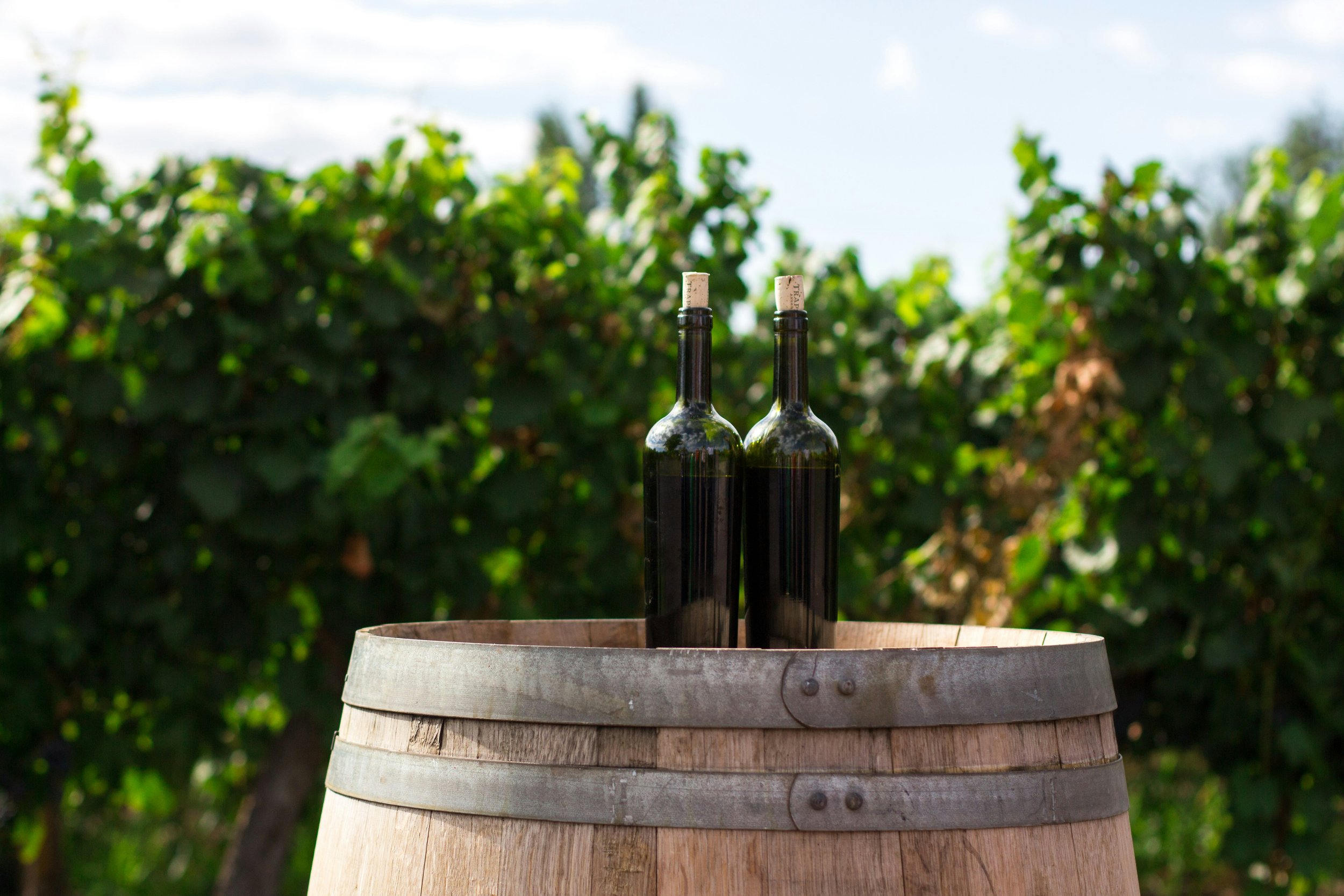What Kind of Wine is Barbera d'Alba?
Explore this Italian wine that captures the essence of Piedmont in every glass. Ideal for wine enthusiasts and those seeking something new, Barbera d'Alba will impress with its distinctive personality.
Get ready to discover your new favorite wine!
Try Barbera d'Alba and our menu at wine bar Long Island City!
What Type of Wine is Barbera d'Alba?
Barbera d'Alba is a gem in the Italian wine world, known for its unique character and rich history. Hailing from Piedmont, this red grape variety is valued for its versatility and ability to reflect the terroir in which it is grown.
Barbera d'Alba Superiore
Barbera d'Alba Superiore represents the evolution and sophistication of the Barbera variety. Unlike the lighter, fresher styles of the past, the Superiore is a more robust and mature version of this grape.
Origin
Located in the Alba region of Piedmont, this denomination encompasses the surroundings of the city of Alba and extends to hills where it coexists with the prestigious Barolo and Barbaresco vineyards. The soils here are rich in clay and limestone, providing an ideal base for growing Barbera. Although the vineyards may sometimes suffer from the shade of Nebbiolo, Barbera d'Alba has managed to stand out for its quality.
Characteristics and Aging
Barbera d'Alba Superiore wines usually present a darker color and fuller body compared to other Barberas. Aging in French oak barrels, often for at least 12 months (with a minimum of 4 months in barrel), contributes to a bolder, more rounded flavor profile. You'll notice dark fruit, violet notes, and a hint of vanilla, balanced by a bright acidity that complements the wine's richness.
Superiore Requirements
To be classified as Superiore, a Barbera d'Alba must contain at least 85% Barbera and may include a small amount of Nebbiolo. It must also be aged for a minimum of 12 months before being released.
Barbera d'Alba Nizza: The Pinnacle of Excellence
Barbera d'Alba Nizza is one of the most distinguished designations within the Barbera world, offering a high-quality expression refined over the years.
Origin
The Nizza subzone, located in the heart of the Monferrato region in Piedmont, is known for its exceptional soils that contribute to the distinctive quality of the wines. Here, the dry, sandy climate gives the Barbera grape a more defined structure. This terroir promotes the development of more complex and elegant wines.
Characteristics and Aging
Barbera d'Alba Nizza is renowned for its intensity and depth. The wines are typically more structured, with notes of dark fruit and additional complexity from extended aging. To qualify as Nizza, the wine must be aged for at least 2 years, including a minimum of 6 months in barrel and 6 months in bottle. This aging process imparts a richness and maturity ideal for those seeking a more refined tasting experience.
Nizza Requirements
Barbera d'Alba Nizza must contain at least 85% Barbera and may include small amounts of other varieties. The regulations require a minimum aging of 2 years, with at least 6 months in barrel and 6 months in bottle, ensuring its complexity and character.
Tasting Notes and Flavor Profile
Barbera d'Alba is notable for its intense ruby color and high acidity, offering a refreshing experience. When young, the wine features bright red fruit flavors, such as cherries and raspberries, with hints of blueberries adding freshness. As it ages, the wine gains greater depth and complexity, exhibiting a more robust character that can evoke wines of greater renown, like Barolo or Barbaresco.
Aroma and Bouquet
Barbera d'Alba delights with its lush aromatic bouquet, presenting a burst of fresh red fruits alongside ripe blueberries that add a layer of aromatic complexity. The freshness of these aromas reflects the wine's high acidity, while low tannins allow the fruity notes to shine clearly. As the wine ages, its bouquet becomes more sophisticated, incorporating subtle hints of sweet spices, vanilla, and wood from barrel aging. This aromatic evolution imparts a richness and complexity that makes Barbera d'Alba a unique olfactory experience.
Taste Profile and Pairing Suggestions
Taste Profile
Barbera d'Alba offers an exceptional balance of freshness and richness, characterized by a vibrant flavor profile. When young, the wine showcases lively red fruit flavors, such as cherries and raspberries, complemented by notable acidity that adds energy and vitality. With aging, the wine develops greater complexity, with dark fruit flavors like blackberries, as well as hints of vanilla and oak from barrel aging. This maturation process adds depth and sophistication to the palate, making Barbera d'Alba a well-rounded and characterful wine.
Pairing Suggestions
Barbera d'Alba is extremely versatile at the table, thanks to its pronounced acidity and balanced profile. It pairs wonderfully with classic Italian dishes like pasta with tomato-based sauces and roasted meats. Its acidity also makes it an excellent match for cured cheeses and grilled meats. Additionally, its versatility allows it to complement lighter options, such as Mediterranean salads or fatty fish, where its freshness perfectly enhances the flavors of more delicate ingredients.
Barbera d'Alba vs. Other Barbera Wines
Barbera d'Alba stands out among Barbera wines for its deeper, more robust character. Compared to other Barbera varieties, this wine uniquely reflects the rich, clayey soils of Alba, providing a higher concentration of dark fruit and vibrant acidity that defines it as a Piedmont gem. Unlike other Barberas, d'Alba typically has a more complete profile, with barrel aging adding subtle touches of vanilla and wood, enhancing its complexity and appeal.
Comparison with Barbera d'Asti
Although both originate from the Piedmont region, Barbera d'Alba and Barbera d'Asti exhibit clear differences. Barbera d'Asti is known for a lighter, more vibrant profile, with sharper acidity and fresher, more lively fruit flavors, such as cherries and red plums. In contrast, Barbera d'Alba tends to be more structured and deep, with dark fruit notes like blackberries and blueberries, and a balanced acidity that gives it a fuller body. While both wines can age in barrels, Barbera d'Alba often has greater density and richness, making it a choice for those seeking a wine with more body and complexity.
How to Serve and Store Barbera d'Alba
Barbera d'Alba is a versatile wine that should be served and stored correctly to highlight its freshness and complexity. By following a few simple guidelines, you can fully enjoy all the features of this exceptional Piedmontese wine.
Ideal Serving Temperature
With its high acidity and moderate tannins, Barbera d'Alba is best served at the right temperature. A slightly cooler temperature than room temperature enhances its vibrant red fruit notes and characteristic freshness. For optimal enjoyment, serve Barbera d'Alba between 16°C and 18°C (60-64°F). This temperature allows the wine to showcase its fruity aromas and subtle hints of vanilla and oak, especially in aged versions. Decanting for 20-30 minutes before serving can also help release its aromatic complexity and flavor.
Best Storage Practices
To maintain the quality of Barbera d'Alba and allow its character to evolve over time, proper storage is essential. Ideally, store bottles in a cellar or a cool, dark place with a constant temperature between 12°C and 15°C (55-59°F). Keep bottles horizontally to ensure the cork remains moist and prevents oxidation. While young Barbera d'Alba is perfect for enjoying within the first few years after bottling, Superiore or barrel-aged versions can benefit from aging up to 10 years. This aging period will develop greater depth and complexity in flavors and aromas.
Try Barbera d'Alba at special occasions with loved ones and find your favorite
Barbera d'Alba is more than a wine; it’s an experience best enjoyed with loved ones, creating unforgettable memories with each toast. With its vibrant freshness and robust character, this wine is perfect for any special occasion, from intimate dinners to large family gatherings. Imagine savoring a glass of Barbera d'Alba while sharing stories around the table, paired with dishes that enhance its fruity flavors and elegant acidity. Exploring different labels on special occasions will help you find your favorite version of this exquisite wine, making each event even more memorable.
FAQS
What type of wine is Barbera d'Alba?
Barbera d'Alba is a red Italian wine known for its vibrant character and accessible profile. Originating from Piedmont, it is distinguished by its deep color, low tannin content, and high acidity.
Is Barbera d'Alba sweet or dry?
Barbera d'Alba is typically a dry wine. Dry wines, like this one, have very little residual sugar, resulting in a fresh, non-sweet palate experience. Despite its fruity character with bright cherry and berry notes, the wine maintains its dryness due to its high acidity, making it a refreshing and balanced choice for those who prefer non-sweet wines. While some producers may slightly adjust the style, the dry profile remains standard in most labels.
What is Barbera wine similar to?
Barbera can be compared to other medium-bodied Italian wines, such as Sangiovese or Dolcetto, due to its bright acidity and fruity approach. It also shares similarities with Pinot Noir in terms of its capacity to be enjoyed both young and with some aging. However, Barbera d'Alba is unique for offering a more robust structure and greater aromatic complexity when aged in oak barrels, sometimes making it comparable to more serious wines like Barolo or Barbaresco in terms of richness and depth.
How does Barbera d'Alba age?
Barbera d'Alba ages excellently, particularly when it has undergone barrel aging. While young, the wine offers fresh, fruity flavors, but with time, it develops greater depth and complexity. Dark fruit notes,

